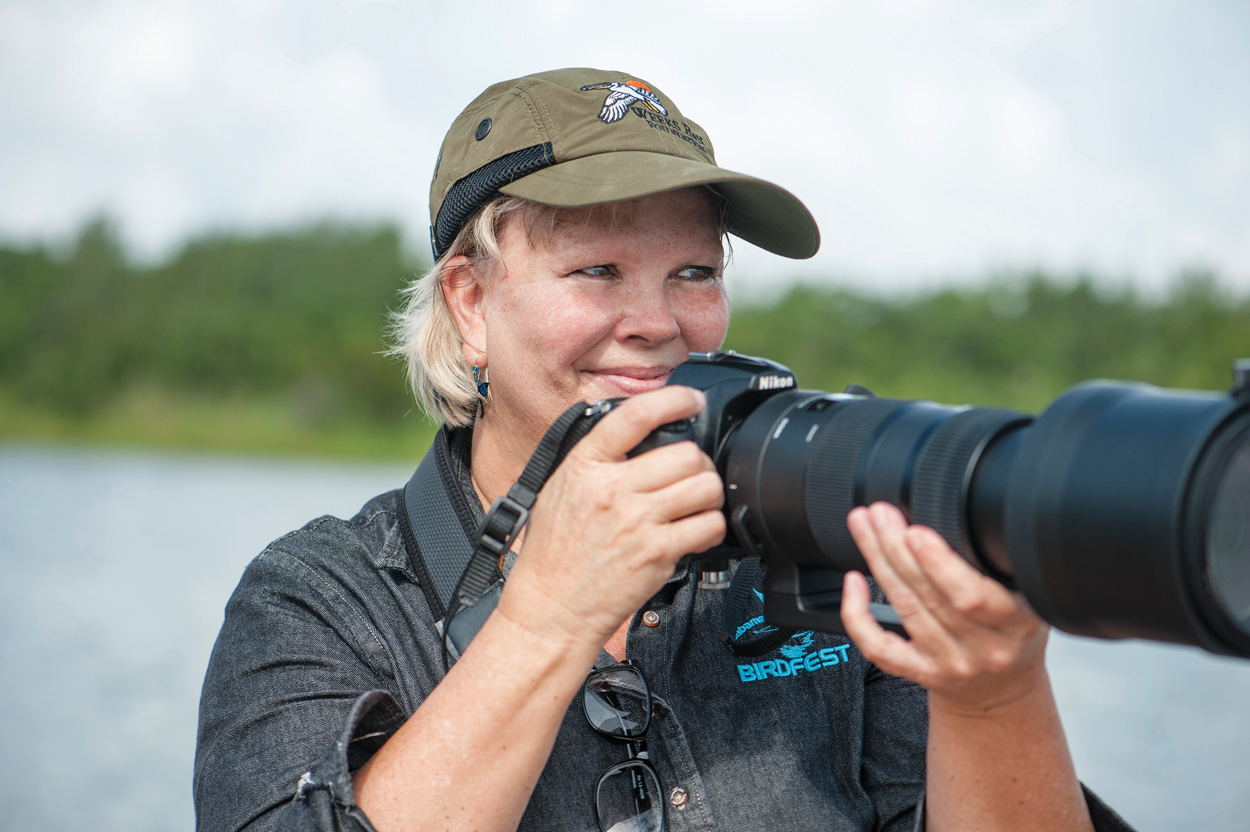
Somewhere amongst the treetops surrounding 5 Rivers Delta Resource Center, a royal tern screeches an early morning welcome. Not to be outdone, noisy insects — a few of which are sure to be breakfast soon — chirp, hiss and buzz. Overhead, a wispy cloud or two dots the blue sky, and a light breeze signals fall has made its long-awaited way to the Gulf.

Early autumn along the Bay ushers in sweaters, bonfires, colorful foliage and — most excitedly for nature photographer Kathy Hicks — fall migration. Occurring primarily from October through mid-November, fall migration is the southern trek birds take from colder weather to milder climates in search of food. Coastal Alabama provides the perfect respite en route to Central and South America. Kathy arrives hoping to catch a glimpse of these winged travelers through her lens.
Donning a hat, long sleeves and jeans, Kathy stands at an unassuming height; her camera supported by a monopod is nearly taller. On her back she carries essentials: water, bug spray, lenses, extra batteries and memory cards. But if you ask her, the most important thing she packs isn’t in the bag.
“The No. 1 rule of nature photography is patience,” she says, slinging the satchel on her back. “Some people think they can skip that part, and they do get lucky sometimes. But the best strategy is to stake out an area where the animal will probably appear, sit still and be quiet — for as long as it takes.” She once sat in the same spot along the shore of the upper delta for 12 solid hours, watching over a heron rookery and awaiting feeding time.
Today Kathy sets out on a shorter jaunt, taking a hiking trail near the kayak launch at 5 Rivers, her home away from home where she works as an educator. “Those are barn swallows,” she says, pointing toward the piney canopy above. She recognizes the individual calls of several bird species, a skill she acquired over the years.


A few yards into the woods, Kathy drops to the ground, belly-down, nestling atop a bed of straw. “My coworkers no longer get alarmed when I suddenly disappear,” she laughs, camera in hand, eye-level with her avian subject. She notes, however, that sometimes there are photo ops that just aren’t feasible — or ethical. “The welfare of the subject has to come first,” she says, iterating the avoidance of approaching baby birds, rare birds or overly stressed birds.
The key to nature photography starts before setting foot outside — research and education are key. “You need to know the habits of your potential subjects,” Kathy says. The indoor educational center at 5 Rivers provides information on local wildlife, while the outdoor sanctuary offers plenty of photographic opportunities. Her other favorite viewing spots include Fort Morgan, Dauphin Island, Weeks Bay, Meaher State Park, Blakeley State Park and the Upper Delta Wildlife Management Area. Even her backyard in Fairhope — where she was the first in Alabama to spot a Hooded Oriole — offers occasional sightings.


Photography comes as a second career for Kathy, who, while in her 40s, graduated summa cum laude in graphic design. “When I first picked up a camera, I thought I’d never understand F-stops and shutter speeds,” she says. “That worry disappeared once I was able to visualize what was happening in the camera. I’m firmly of the opinion that if I can take good photos, anyone can do it.





